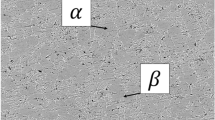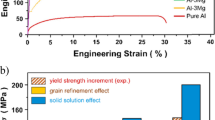Abstract
Nickel alloys such as Inconel 718 have been widely used in the aerospace, oil and gas, and chemical industries, since they have excellent properties that combine high creep resistance and high mechanical strength, fatigue and corrosion. However, these properties make these alloys extremely difficult to machine, due to a high level of heat generation during material removal, causing rapid wear of cutting tools and a detrimental effect on the surface integrity, reducing the fatigue life of the machined component and lowering the productivity. Looking at the literature, it seemed that there is an opportunity to study the surface integrity of Inconel 718, turned under cryogenic conditions at cutting speeds of 250, 275 and 300 m/min. For these reasons, this work aims to evaluate the influence of the cutting parameters on the surface integrity of Inconel 718 turned under cryogenic conditions using liquid nitrogen (LN2) at high cutting speeds. A whisker-reinforced ceramic tool was used in order to provide wear and shock resistance at high cutting speeds; these are factors that are associated with surface integrity in terms of roughness Ra, residual stresses, microhardness and cutting forces. A central composite design was chosen as factorial planning for the independent variables including cutting speed, feed rate and depth of cut when carrying out the experiments. Cryogenic cooling resulted in an average cutting force of 267 N, where the penetration force was higher. The roughness Ra was 0.52 μm and was influenced by the feed rate and depth of cut. The highest tensile residual stresses in the circumferential direction with LN2 and under dry conditions were 1394 MPa and 1237 MPa, respectively and were influenced by the depth of cut. Small changes in microhardness occurred at a depth of 0.3 mm from beneath machine surface and the presence of a white layer was not observed. Although tensile residual stresses were slightly higher when using LN2 compared to dry machining on the surface, the use of LN2 caused higher compressive residual stresses at the subsurface, which can improve the fatigue life of machined components at high cutting speeds. The results showed that lower cutting parameters tend to give the best results in terms of the cutting force and surface integrity.










Similar content being viewed by others
References
Altin A, Nalbant M, Taskesen A (2007) The effects of cutting speed on tool wear and tool life when machining Inconel 718 with ceramic tools. Mater Des 28:2518–2522
Amini S, Fatemi MH, Atefi R (2014) Speed turning of Inconel 718 using ceramic and carbide cutting tools. Arab J Sci Eng 39(39):2323–2330
Aramcharoen A, Chuan SK (2014) An experimental investigation on cryogenic milling of Inconel 718 and its sustainability assessment. Procedia CIRP 14:529–534
Arunachalam RM, Mannan MA, Spowage AC (2004) Residual stress and surface roughness when facing age hardened Inconel 718 with CBN and ceramic cutting tools. Int J Mach Tool Manu 44:879–887
Bagherzadeh A, Budak E (2018) Investigation of machinability in turning of difficult-to-cut materials using a new cryogenic cooling approach. Tribol Int 119:510–520
Behera BC, Alemayehu H, Ghosh S, Rao PV (2017) A comparative study of recent lubri-coolant strategies for turning of Ni-based superalloy. J Manuf Process 30:541–552
Bordinassi EC (2006) Contribuição ao estudo da integridade superficial de um aço inoxidável super-duplex após usinagem. Tese (Doutorado em) - USP, São Paulo
Bushlya V, Zhou J, Ståhl JE (2012) Effect of cutting conditions on machinability of superalloy Inconel 718 during high speed turning with coated and uncoated PCBN tools. Procedia CIRP 3:370–375
Coelho RT, Silva LR, Braghini A Jr, Bezerra AA (2004) Some effects of cutting edge preparation and geometric modifications when turning Inconel 718 at high cutting speeds. J Mater Process Technol 148:147–153
Devillez A, le Coz G, Dominiak S, Dudzinski D (2011) Dry machining of Inconel 718, workpiece surface integrity. J Mater Process Technol 211:1590–1598
Ezugwu EO et al (2005) Machining of nickel-base, Inconel 718, alloy with ceramic tools under finishing conditions with various coolant supply pressures. J Mater Process Technol 162–163:609–614
Fernández D et al (2014) Comparison of machining Inconel 718 with conventional and sustainable coolant. Modern Machinery Sci J:506–510
Ghosh CS, Rao PV (2017) Performance evaluation of deep cryogenic processed carbide inserts during dry turning of Nimonic 90 aerospace grade alloy. Tribol Int 115:397–408
Hadia MA et al (2013) Comparison between up-milling and down-milling operations on tool wear in milling Inconel 718. Procedia Engineering 68:647–653
He ZH, Zhang XM, Ding H (2016) Comparison of residual stresses in cryogenic and dry machining of Inconel 718. Procedia CIRP 46:19–22
Iturbe A, Hormaetxe E, Garay A, Arrazola PJ (2016) Surface integrity analysis when machining Inconel 718 with conventional and cryogenic cooling. Procedia CIRP 45:67–70
Kadam SG, Pawade RS (2017) Surface integrity and sustainability assessment in high-speed machining of Inconel 718 – an eco-friendly green approach. J Clean Prod 147:273–283
Kaynak Y (2014) Evaluation of machining performance in cryogenic machining of Inconel 718 and comparison with dry and MQL machining. Int J Adv Manuf Technol 72:919–933
Kenda J, Pusavec F, Kopac J (2011) Analysis of residual stresses in sustainable cryogenic machining of nickel based alloy-Inconel 718. J Manuf Sci Eng 133:041009
Li L, He N, Wang M, Wang ZG (2002) High-speed cutting of Inconel 718 with coated carbide and ceramic inserts. J Mater Process Technol 129:127–130
Madariaga A, Esnaola JA, Fernandez E, Arrazola PJ, Garay A, Morel F (2014) Analysis of residual stress and work-hardened profiles on Inconel 718 when face turning with large-nose radius tools. Int J Adv Manuf Technol 71:1587–1598. https://doi.org/10.1007/s00170-013-5585-6
Musfirah AH et al (2017) Tool wear and surface integrity of Inconel 718 in dry and cryogenic coolant at high cutting speed. Wear 376–377(Part A):125–133
Nataraj M et al (2015) Study on surface integrity of high speed turning of Inconel 718 using taguchi DOE approach. Int J Appl Eng Res 10(2):4191–4200
Olgun U, Budak E (2013) Machining of difficult-to-cut-alloys using rotary turning tools. Procedia CIRP 8:81–87
Pande PP, Sambhe RU (2014) Machinability assessment in turning of Inconel 718 nickel-based super alloys: a review. Int J Mech Eng Technol, v 5(10):94–105
Patil NG, Asem A, Pawade RS, Thakur DG, Brahmankar PK (2014) Comparative study of high speed machining of Inconel 718 in dry condition and by using compressed cold carbon dioxide gas as coolant. Procedia CIRP 24(2014):86–91
Pawade RS, Joshi SS, Brahmankar PK (2008) Effect of machining parameters and cutting edge geometry on surface integrity of high-speed turned Inconel 718. Int J Mach Tool Manu 48:15–28
Peng RL et al (2013) Surface integrity and the influence of tool wear in high speed machining of Inconel 718. 13th International Conference on Fracture, 13, 2013, Beijing, pp 16–21
Pusavec F, Hamdi H, Kopac J, Jawahir IS (2011) Surface integrity in cryogenic machining of nickel based alloy—Inconel 718. J Mater Process Technol 211:773–783
Pusavec F, Deshpande A, Yang S, M'Saoubi R, Kopac J, Dillon OW Jr, Jawahir IS (2015) Sustainable machining of high temperature nickel alloy e Inconel 718: part 2 - chip breakability and optimization. J Clean Prod 87:941–952
Shalaby MA, Veldhuis SC (2018) Wear and tribological performance of different ceramic tools in dry high speed machining of Ni-Co-Cr precipitation hardenable aerospace superalloy. Tribol Trans 62:62–77. https://doi.org/10.1080/10402004.2018.1486494
Shalaby MA, Veldhuis SC (2019) Tool wear and chip formation during dry high speed turning of direct aged Inconel 718 aerospace superalloy using different ceramic tools. J Eng Tribol. https://doi.org/10.1177/1350650118822388
Sharma SV et al (2009) Cooling techniques for improves productivity in turning. Int J Mach Tool Manu 49:435–453
Sivaiah P, Chakradhar D (2017a) Multi-objective optimisation of cryogenic turning process using Taguchi-based grey relational analysis. Int J Mach Mach Mater 19(4):297
Sivaiah P, Chakradhar D (2017b) Influence of cryogenic coolant on turning performance characteristics: a comparison with wet machining. J Mater Manuf Process 32(13)
Sivaiah P, Chakradhar D (2017c) Experimental investigation on feasibility of cryogenic, MQL, wet and dry machining environments in turning of 17-4 PH stainless steel. Mater Manuf Process 32:1775–1788. https://doi.org/10.1080/10426914.2017.1339317
Sivaiah P, Chakradhar D (2017d) Comparative evaluations of machining performance during turning of 17-4 PH stainless steel under cryogenic and wet machining conditions. Mach Sci Technol 22:147–162. https://doi.org/10.1080/10910344.2017.1337129
Sivaiah P, Chakradhar D (2018a) Effect of cryogenic coolant on turning performance characteristics during machining of 17–4 PH stainless steel: a comparison with MQL, wet, dry machining. J Manuf Sci Technol. CIRPJ 455 No. of Pages 11
Sivaiah P, Chakradhar D (2018b) Modeling and optimization of sustainable manufacturing process in machining of 17-4 PH stainless steel. Measurement. https://doi.org/10.1016/j.measurement.2018.10.067
Sivaiah P, Chakradhar D (2018c) Analysis and modeling of cryogenic turning operation using response surface methodology. Silicon 10:2751–2768
Sivaiah P, Chakradhar D (2019) The effectiveness of a novel cryogenic cooling approach on turning performance characteristics during machining of 17-4 PH stainless steel material. D Silicon 11:25–38. https://doi.org/10.1007/s12633-018-9875-3
Sørby K, Vagnorius Z (2018) High-pressure cooling in turning of Inconel 625 with ceramic cutting tools. Procedia CIRP 77:74–77
Thakur A, Gangopadhyay S (2016) State of art in surface integrity in machining of nickel based super alloys. Int J Mach Tools Manuf 100:25–54
Thakur DG, Ramamoorthy B, Vijayaraghavan L (2009) Study on the machinability characteristics of super alloy Inconel 718 during high speed turning. Mater Des 30:1718–1725
Thamizhmaniia S et al (2012) Performance evaluation of cryogenically treated worn CBN insert by turning process. Key Eng Mater. https://doi.org/10.4028/www.scientific.net/KEM.504-506.1323
Ulutan D, Ozel T (2011) Machining induced surface integrity in titanium and nickel alloy: a review. Int J Mach Tool Manu 51:250–280
Umbrello D (2013) Investigation of surface integrity in dry machining of Inconel 718. Int J Adv Manuf Technol 69:2183–2190
Villares Metals (2016) Resistentes à alta Temperatura. May be accessed at: http://www.villaresmetals.com.br/pt/Produtos/Ligas-Especiais/Resistentes-a-alta-Temperatura. Accessed 4 Mar 2016
Xavier SED (2010) Análise de efeitos da criogenia na usinagem de anéis de rolamento. Dissertação (Mestrado Profissional em Engenharia Automotiva) - Escola Politécnica da Universidade de São Paulo, São Paulo
Xue C, Chen W (2011) Adhering layer formation and its effect on the wear of coated carbide tools during turning of a nickel-based alloy. Wear 270:895–902
Yildiz Y, Nalbant M (2008) A review of cryogenic cooling in machining process. Int J Mach Tools Manuf 48:947–964
Zhou J, Bushlya V, Avdovic P, Ståhl JE (2012) Study of surface quality in high speed turning of Inconel 718 with uncoated and coated CBN tools. Int J Adv Manuf Technol 58:141–151
Zhou J, Bushlya et al (2014) Analysis of subsurface microstructure and residual stresses in machined Inconel 718 with PCBN and AL2O3-SiCw tools. Procedia CIRP 13:150–155
Zhu D, Zhang X, Ding H (2013) Tool wear characteristics in machining of nickel-based superalloys. Int J Mach Tool Manu 64:60–77
Zhuang, et al., 2015. Employing preheating- and cooling-assisted technologies in machining of Inconel 718 with ceramic cutting tools: towards reducing tool wear and improving surface integrity, Int J Adv Manuf Technol, n 80, p. 1815–1822
Author information
Authors and Affiliations
Corresponding author
Additional information
Publisher’s note
Springer Nature remains neutral with regard to jurisdictional claims in published maps and institutional affiliations.
Rights and permissions
About this article
Cite this article
Pereira, W.H., Delijaicov, S. Surface integrity of INCONEL 718 turned under cryogenic conditions at high cutting speeds. Int J Adv Manuf Technol 104, 2163–2177 (2019). https://doi.org/10.1007/s00170-019-03946-1
Received:
Accepted:
Published:
Issue Date:
DOI: https://doi.org/10.1007/s00170-019-03946-1




